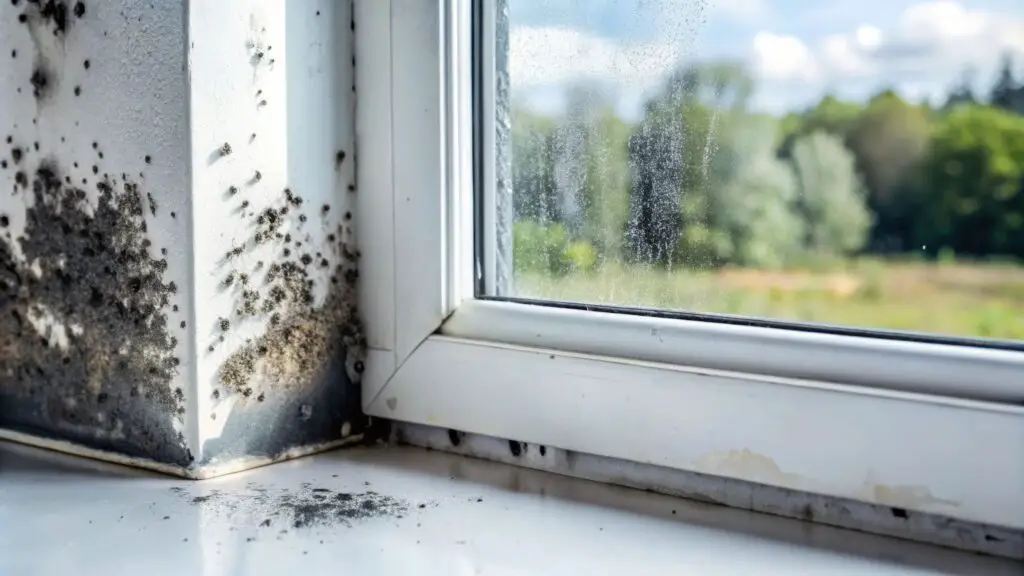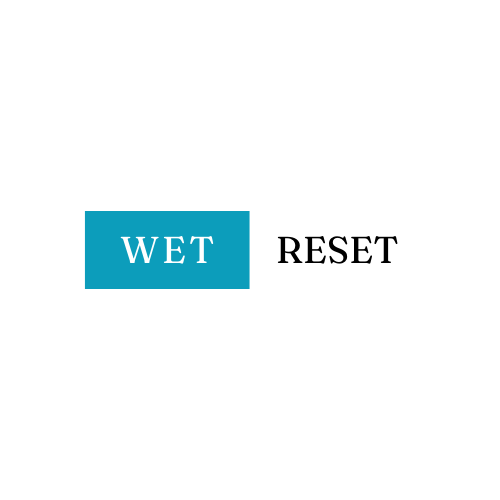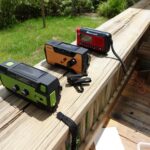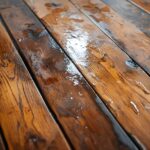
Types of Mold
Mold is far more common in homes than many people imagine and is often not taken seriously enough, especially in minor traces. But if there are unusual levels of air moisture in your home, mold has the potential to develop and thrive.
In damp, dark spaces like basements, bathrooms, and areas with water damage, mold can creep out of nowhere and silently cause relentless issues to your property. Mold, in short, is an ever-present threat.
A failure to deal with the different types of mold can lead to serious health problems and cause long-lasting structural issues. With that in mind, knowing all about the types of mold in homes is a sensible, proactive, and commonly overlooked step in protecting both your home and your well-being.
You certainly don’t need to become an expert level on the different types of house mold, but a general awareness of the fungi could protect you. In this article, we shall explain how you can do that and why.
Types of House Mold
Much to the surprise of many unsuspecting homeowners, there are many types of mold, although not all are dangerous in equal measure.
While some may only cause minor allergies, others can lead to severe respiratory issues or even structural damage. In rare cases, the different types of mold in homes can even be life-threatening.
Mold spreads alarmingly quickly, especially in environments affected by water damage, which means that immediate action is not just a wise move, but a crucial action.
At WetReset, we specialize in identifying and removing the different types of mold in homes. With professional tools and years of expertise, we are well-equipped to handle mold remediation efficiently, ensuring your home is safe and mold-free. Knowing what you’re dealing with can save time, money, and stress.
Why Mold Is a Problem
To consider mold nothing more than a little unsightly could pose a serious hazard to both health and property. Mold is so much more than that. In fact, exposure to certain types of mold can cause respiratory problems, skin irritation, and allergies. Black mold – the most sinister and dangerous type of mold in most houses, has the potential to kill in some cases.
Anyone with asthma or a weakened immune system is especially at risk. Prolonged exposure may even lead to severe illnesses, including chronic lung issues.
Beyond the initial health concerns, mold weakens building materials like drywall, wood, and insulation, compromising the structural integrity of homes. It positively thrives in damp environments, often caused by leaks, floods, or other forms of water damage. These conditions make types of mold in homes a persistent, relentless issue if not addressed quickly.
The longer you leave it, the harder it is to address. Ignoring mold allows it to spread, making the problem harder—and more expensive—to resolve. Make yourself fully aware of the different types of house mold, and you can hopefully take action before escalation ensues.
Professional services, like those offered by WetReset, provide expert remediation against mold and effectively prevent future outbreaks. We will cover our services in more detail later in this article. For now, let’s take a look at the different types of mold in homes and the threat they pose.
Common Types of Mold Found in Homes
Mold is far from a one-size-fits-all problem. Different environments promote the growth of different types of mold, with each variety posing unique risks to health and property. Below are some of the most common types of mold in homes that homeowners should be aware of:
1. Stachybotrys (Black Mold)
Commonly referred to as black mold and easily the most dangerous of them all, Stachybotrys is one of the most concerning types of house mold. It grows more successfully in areas with consistent moisture, such as bathrooms, basements, or rooms with water damage.
Black mold produces mycotoxins that can lead to respiratory issues, fatigue, and even long-term health complications. Because of its unforgiving, dangerous toxicity, professional mold removal is strongly recommended if detected.
2. Aspergillus
Aspergillus is a widespread mold that often appears in yellow, green, or blue hues with a powdery texture. It grows on walls, insulation, and air ducts.
While this mold is often linked to allergies, prolonged exposure can lead to more severe conditions like Aspergillosis, a lung infection. This mold spreads easily in damp conditions and requires swift action to prevent further contamination.
3. Penicillium
Thanks to its musty odor and blue or green appearance, Penicillium is easily identified. It tends to grow on damp surfaces, such as carpets, furniture, and wallpaper, more than others and is highly aggressive.
Although Penicillium has been used in medicine (penicillin), its presence in homes leads to the precise opposite of its medicinal use—it triggers ill health in the form of allergies, asthma, and lung inflammation. Regularly checking high-humidity areas can help catch this mold early.
4. Cladosporium
Cladosporium is a strange, velvety-textured mold that grows in poorly ventilated spaces like basements and attics. It can be olive green or brown and is a frequent culprit behind respiratory problems.
This type of mold spreads quickly, so it’s essential to address it as soon as it’s detected—although you could express the same urgency about all types of mold in homes.
5. Alternaria
Like other types of mold, Alternaria is usually found in damp areas such as bathrooms, showers, or window frames. Rather uniquely, it’s both indoor and outdoor mold, with its spores easily spreading into homes.
Alternaria can cause skin irritation, asthma attacks, and various other unpleasant allergic reactions. Once it takes hold, professional mold removal is required to contain and remove it.
Other Types of Mold
- Acremonium: Found in areas with chronic water damage, this mold starts as a moist substance and turns powdery. It can grow on wallpaper, insulation, and humidifiers.
- Chaetomium: Common in water-damaged homes, this mold emits a strong, distinctly musty odor and can weaken drywall and wood.
- Ulocladium: Frequently found in homes that have experienced flooding, Ulocladium can cause respiratory problems and allergies.
None of the different types of mold are ‘safe,’ so to speak. Each of these types of mold can have harmful effects on your health and home, and in most cases, it certainly isn’t something to be rectified by anyone other than a professional.
Effective mold removal almost always requires specialized tools and expertise, which is why addressing the problem with WetReset’s professional services ensures thorough mold remediation. Identifying and removing these molds early can save homeowners from expensive repairs and health risks.
How Mold Affects Health and Property
As you can probably gather by now, mold affects more than just appearances. It can make a serious dent in your health and property. Again—and this is worth reiterating—prolonged exposure to certain types of mold can lead to respiratory problems, allergies, and asthma symptoms, such as coughing, wheezing, and throat irritation.
For people with pre-existing conditions or compromised immune systems, the effects resulting from the types of mold in homes can be even more severe, including chronic lung infections or long-term health complications.
Aside from the various health concerns, mold damages your home by weakening structural materials like wood, drywall, and insulation. This is especially true for the types of mold in homes that thrive in damp conditions. As mold spreads, it compromises the safety of floors, walls, and ceilings, often requiring costly repairs.
Prompt removal of types of house mold is important, to say the least, if you want to avoid these risks. Ignoring the problem allows mold to spread further, creating a larger hazard. Acting quickly with professional help prevents these issues from escalating.
Why Professional Mold Remediation is Essential!
Attempting to handle mold on your own might seem like a cost-effective, quick-fix solution, but it often makes the problem far worse.
Without the proper tools or knowledge, disturbing mold can release spores into the air, allowing it to spread further. This is especially risky with the more harmful types of mold in homes, such as Stachybotrys or Aspergillus, which can impact your health and safety.
Professionals like WetReset use specialized equipment and techniques to safely remove different types of mold without risking cross-contamination. They also identify hidden mold in hard-to-reach areas, preventing future outbreaks.
DIY approaches often fail to address the root cause of the issue, such as water leaks and poor water evaporation rates. WetReset not only removes mold but also tackles the moisture problems that allow it to thrive. If your home is dealing with one of the many types of mold, professional remediation ensures thorough removal, protecting both your property and health.
Bottom Line
Mold in any form can harm your health and damage your property. Knowing about the different types of mold in homes helps you act quickly to prevent further risks, and in that sense, we hope this article helped in some way.
Ultimately, however, professional remediation is the safest way to handle different types of house mold.
Our expert team can effectively remove different types of mold quickly, diligently, and surprisingly affordably, ensuring your home is safe and secure. Don’t let mold disrupt your life—contact WetReset today for a free consultation and restore your home to its former glory.



